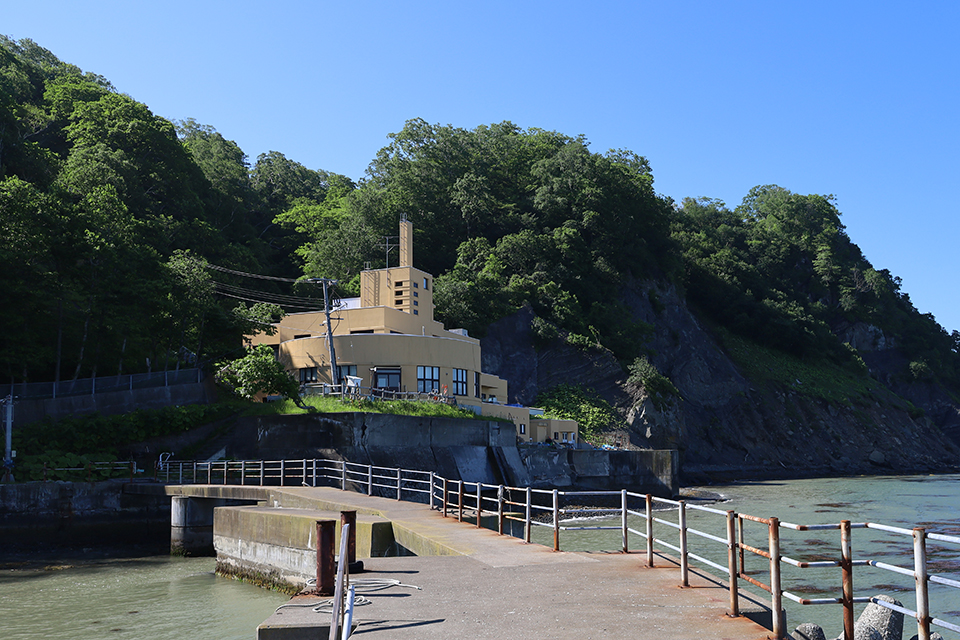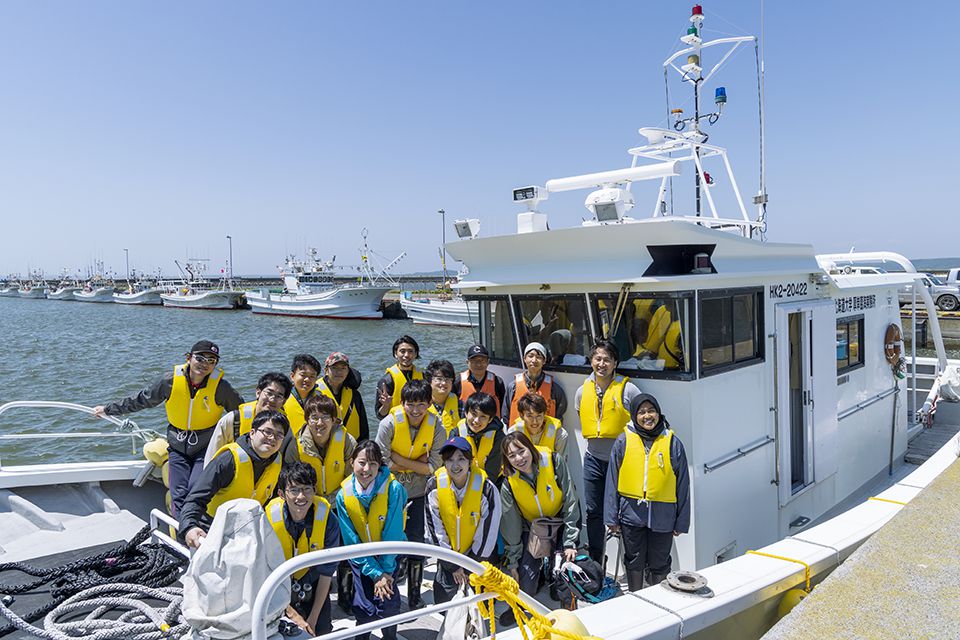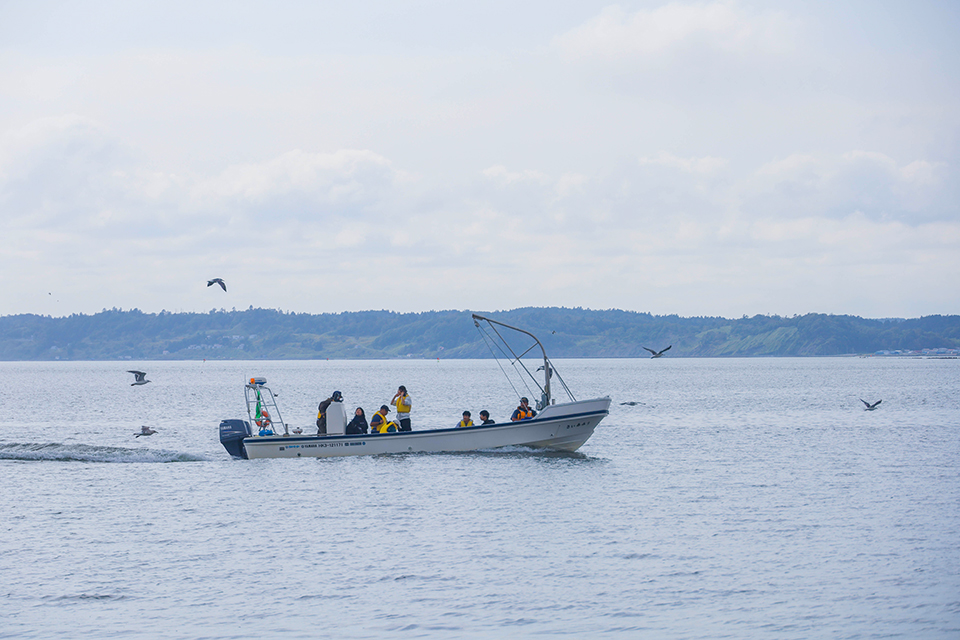Fields of Knowledge: The interconnected world of oceans, forests, and rivers — Akkeshi Marine Station
Research Highlight | March 30, 2023
Hokkaido University’s research and academic facilities extend throughout Hokkaido and to Wakayama Prefecture, including Experiment Farms and Livestock Farm, extensive research forests, training ships, and aquatic research stations. With a total area of about 70,000 hectares, the research forests are among the largest in the world. The “Fields of Knowledge” series focuses on the diverse research and academic activities taking place in the fields.
Akkeshi Marine Station was founded in 1931 as Japan’s only subarctic marine research station that mainly researches organisms in a cold current. It stands under the cliffs of Cape Aikappu, a scenic spot with spectacular views. Surrounded by the blessed natural environment of a national park, people engaged in a wide range of research and education on marine ecosystems. The seventh installment of the ‘Field of Knowledge’ series, ‘The interconnected world of oceans, forests, and rivers’, introduces the facilities and research at the Akkeshi Marine Station along with interviews with researchers and students.
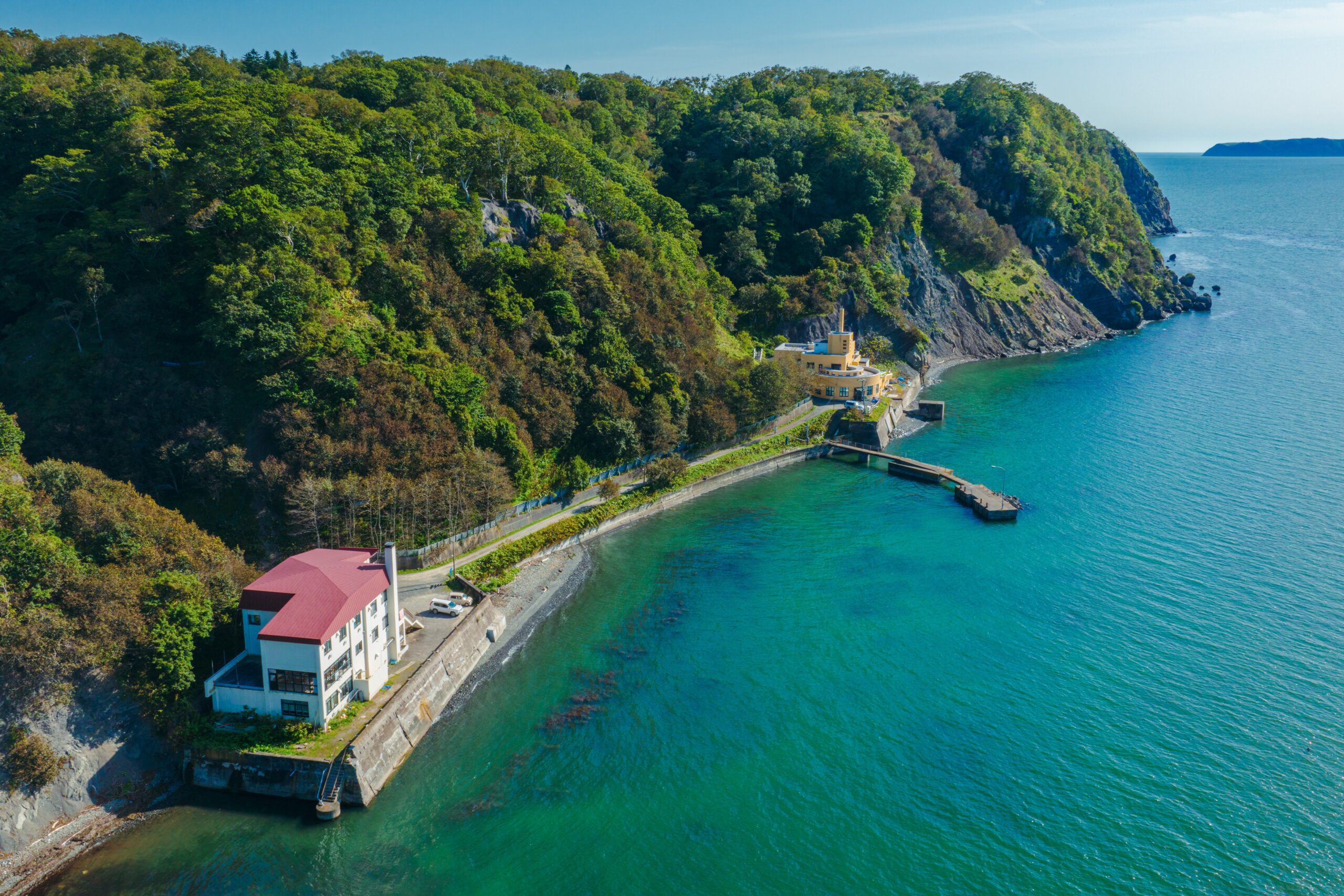
Hokkaido University’s Akkeshi Marine Station under the cliffs in Akkeshi Town. The yellow building at the back is the main building and the building at the foreground is the dormitory. (Drone photo by GEOGRAMS)
Modern architecture under cliffs and a blessed natural environment
Akkeshi Marine Station is located approximately 300 km east of the Sapporo campus. It is reached by leaving the urban part of Akkeshi Town and descending some 700 m by steep gravel road down cliffs at the end. A pier in front of the station extends into a shining green sea of seagrass beds.
The main building, built in 1931, has a unique architectural design, with a modern exterior and art deco interior, and was selected by DOCOMOMO Japan (*1) as an example of “modern movement architecture in Japan.” This area was designated as the Akkeshi-Kiritappu-Konbumori Quasi-National Park in 2021. “One of the charms of this station is that it preserves an unspoiled natural environment,” says Professor Masahiro Nakaoka, the Director of Akkeshi Marine Station.
The 40-hectare site includes the Aikappu Museum of Natural History and an accommodation building for researchers. Cape Aikappu, a famous sightseeing spot, is also located on the site. The entire area was designated as Akkeshi-Kiritappu-Konbumori Quasi-National Park in 2021.
“One of the charms of this station is that it preserves an unspoiled natural environment,” says Professor Masahiro Nakaoka, the Director of Akkeshi Marine Station.
He says that a wide range of research and education, mainly on marine ecology and biological oceanography, is conducted at this station. An average of 3,000 researchers and students from in- and outside Japan visit this station annually.
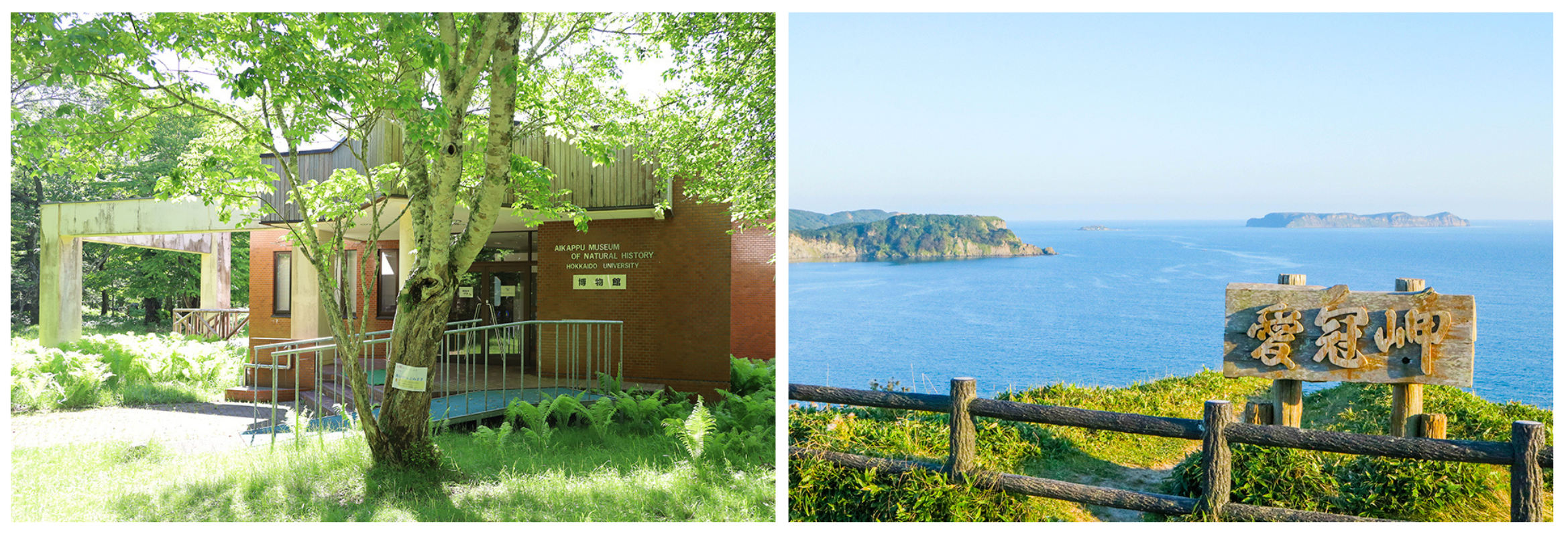
Left: Aikappu Museum of Natural History (photo by Naoki Tomizuka) and the tourist spot Cape Aikappu (photo by Aprilia Agatha Gunawan)
“Although it is a marine laboratory, at the back there are forests, rivers, lakes, and wetlands. So, recently we have been collaborating with researchers specializing in forest and terrestrial water to study how the inflow of inland materials through rivers affects coastal areas. A remarkable feature is its active involvement in research outside the ocean too,” said Professor Nakaoka. In recent years, he says, activities related to the SDGs are also increasing, including environmental issues such as climate change, microplastics, and red tides, as well as the sustainability of local communities in the face of population decline.
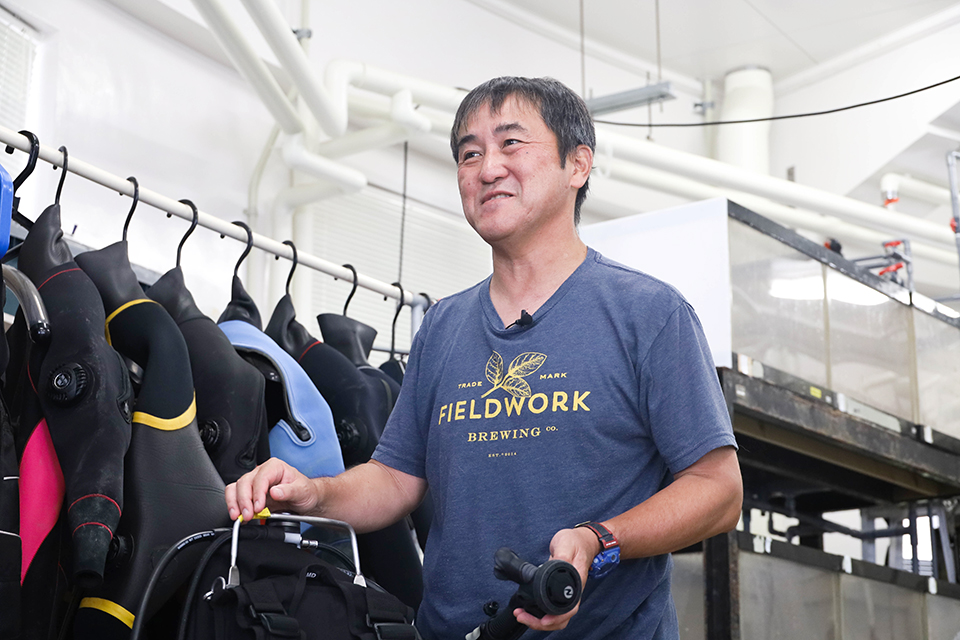
Professor Masahiro Nakaoka of Field Science Center for Northern Biosphere, Director of Akkeshi Marine Station (photo by Aprilia Agatha Gunawan)
“Marine Ecology Training” on board for students
Akkeshi Marine Station conducts more than ten field practicums for students from Hokkaido University, as well as universities in Japan as well as abroad. In late June, a marine laboratory course for third-year undergraduate students of the Department of Biology, School of Science was offered. Sixteen students boarded the Misago-maru, a 30-passenger training vessel, and set sail from the Port of Akkeshi out to sea. The students were divided into groups to collect seawater and phytoplankton and observe the marine environment. Some students got seasick, but they all managed to complete their tasks. In the afternoon, the students analyzed the collected seawater and observed plankton under a microscope in the laboratory.
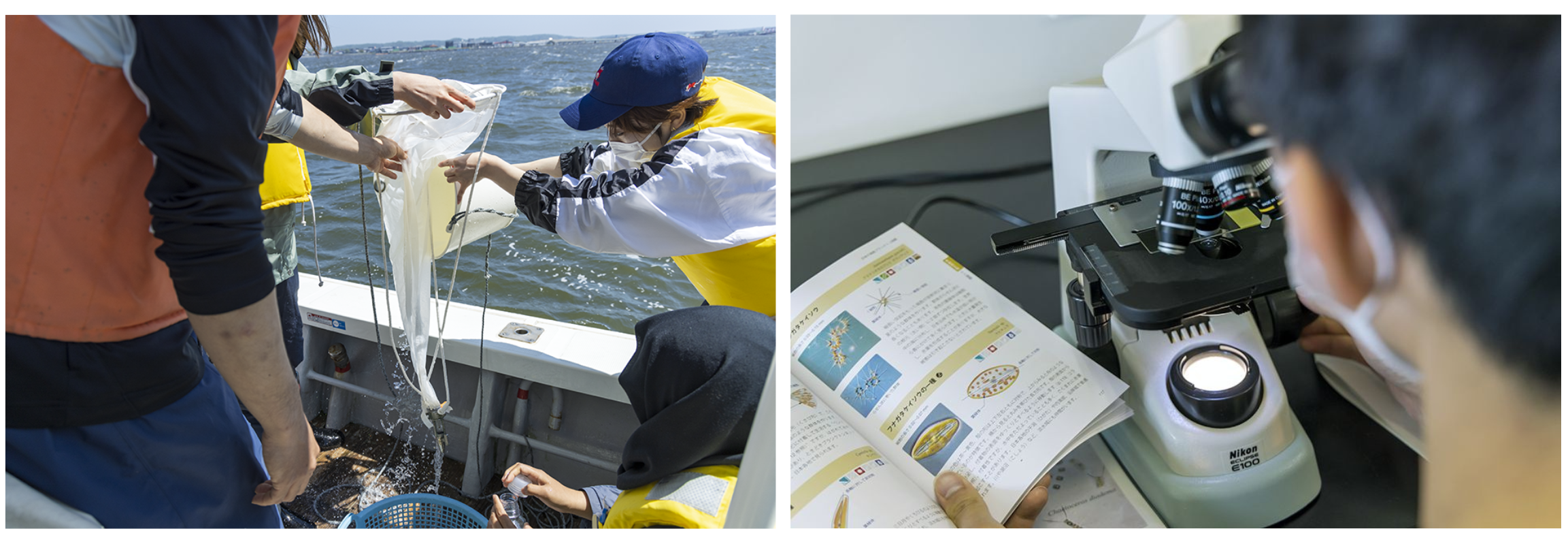
Seawater sampling for phytoplankton aboard the TR/V Misago-maru (left), the identification of phytoplankton species using the microscope in the laboratory (right) (Photo by Hiromi Terashima, Kotoha-sha)
The aim of this course was to deepen students’ understanding of marine ecosystems and cultivate their abilities to think about them through a series of experiences. A participating student commented, “It was more fun than I had imagined to actually experience exploration and observation on a ship. I have never studied the ocean in detail before, so everything I learned on this practicum was fresh and interesting.”
Collaborating with domestic and international research institutions to tackle the world’s oceanic issues
In recent years, “Blue Carbon (*2)” has been attracting attention as a new carbon sink that absorbs atmospheric CO2. Since beds of kelp and seagrass, such as the Zostera marina, in particular, have high carbon fixation capacity, there are calls for their conservation and restoration to mitigate climate change.
Akkeshi Marine Station has long been observing the relationship between seagrass beds and their inhabitants and environment, with the focus on Zostera marina, which is widely distributed in temperate and subarctic regions of the Pacific and Atlantic Oceans in the northern hemisphere. It has also participated in many international projects, including ZEN (Zostera Experimental Network), to conduct comparative analyses on a global scale.
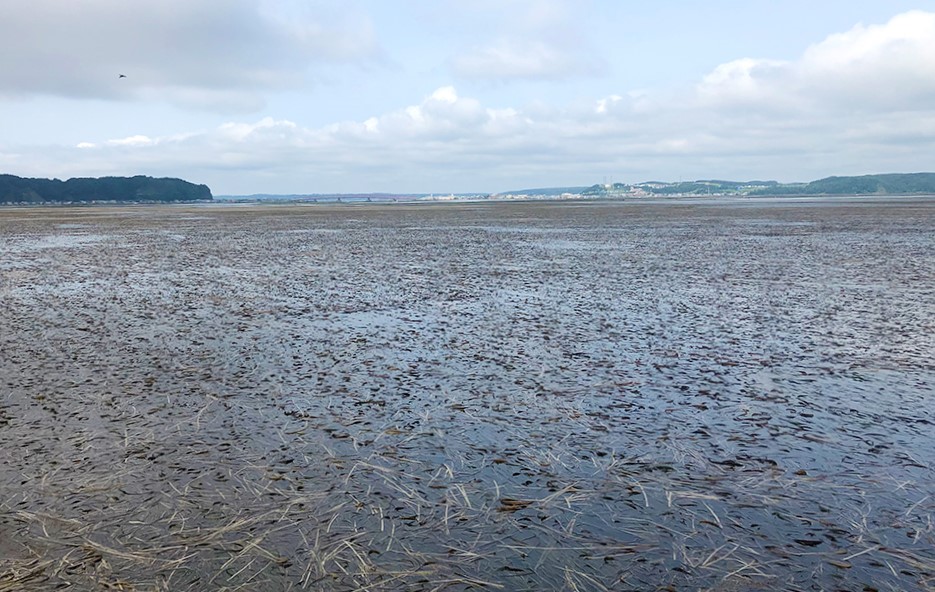
Seagrass in Akkeshi Lake. Like land plants, marine plants such as seaweed and sea grass convert CO2 in the atmosphere into organic matter through photosynthesis and store carbon. (Photo by Hiromi Terashima, Kotoha-sha)
At the moment, there are three faculty members, a postdoctoral researcher, two technical staff, and ten students stationed in the Akkeshi Marine Station where they are engaged in educational and research activities. Wakako Bunya, a fourth-year student in the Faculty of Science, is investigating the circulation of dissolved organic matter in oceans and rivers. “Some dissolved organic matters are not fit for living organisms and these matters are believed to remain in the ocean for thousands of years after sinking without decomposition. As blue carbon, they are interesting to look at. By studying the dynamics of dissolved organic matter, I hope to clarify the mechanisms of the blue carbon ecosystem,” said Bunya.
Yuki Kawashima, a fourth-year student in the Faculty of Science, is researching the role of substances released from Zostera marina, such as causing marine snow, in the marine ecosystem. “The transparent and sticky substance released from Zostera marina captures the surrounding organic matter and settles on the seafloor. I am studying the possibility that this contributes to blue carbon,” explained Kawashima.
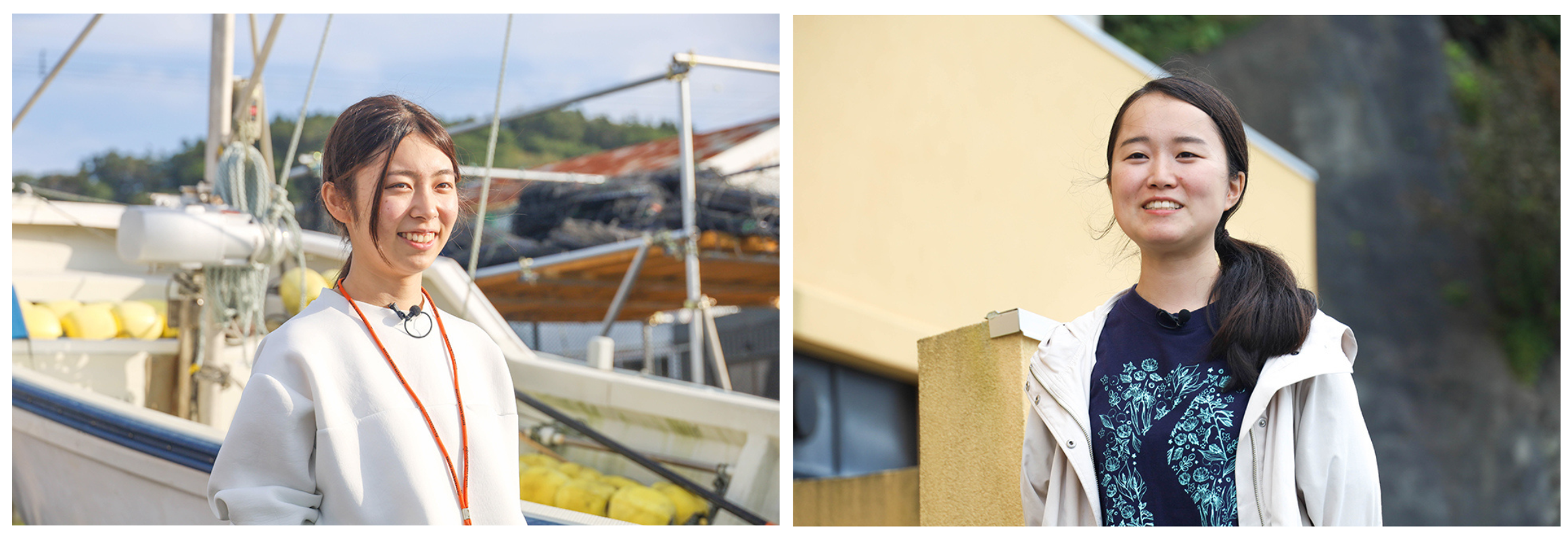
Yuko Kawashima (left) and Wakako Bunya (right), both are fourth-year students in the Faculty of Science (Photo by Aprilia Agatha Gunawan)
Akkeshi Marine Station also does observations from the sky and space using drones and satellites. Associate Professor Tomonori Isada of the Field Science Center for Northern Biosphere is developing a phytoplankton identification model using satellite data in addition to biological approaches. “To learn more about the marine environment, we are taking water samples and conducting field surveys to find out what kind of phytoplankton are present and how much photosynthesis they are doing. We are also using satellite data to observe phytoplankton distribution and carbon dioxide absorption over a wider area,” said Associate Professor Isada.
Willy Angraini, a first-year master’s student in the Graduate School of Environmental Sciences, is studying how rising ocean temperatures affect the amount of photosynthesis in phytoplankton in the Oyashio (cold current) region. “When the ocean surface temperature rises, a different layer forms between the ocean surface and the deeper layers. When this layer is created, nutrients from the seafloor are unable to rise to the sea surface, so the phytoplankton does not have enough nutrients to survive,” explained Willy who hopes that the results of their research can reach the policymakers, thus creating positive impact on the society.
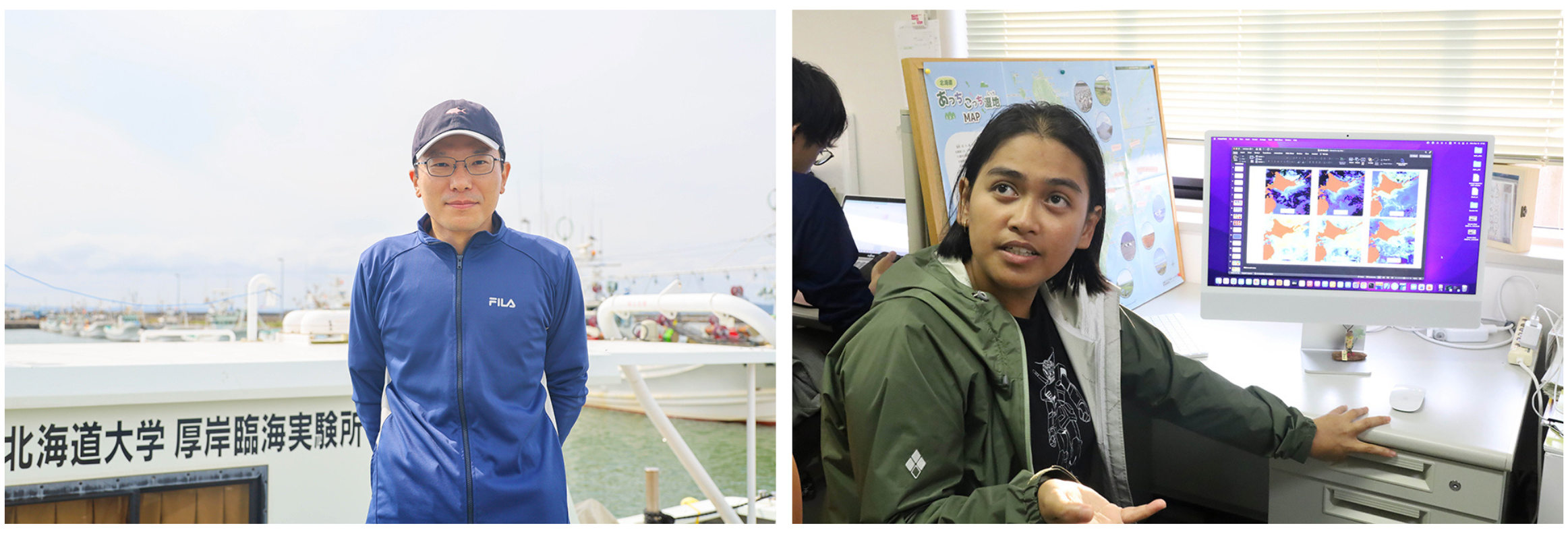
Associate Professor Tomonori Isada of the Field Science Center for Northern Biosphere (left) and Willy Angraini, first-year master’s student in the Graduate School of Environmental Sciences (Photos by Yu Kikuchi)
Associate Professor Tomonori Isada of the Field Science Center for Northern Biosphere (left) and Willy Angraini, first-year master’s student in the Graduate School of Environmental Sciences (Photos by Yu Kikuchi)
“It is important to provide data to international research networks and identify commonalities and peculiarities within the world. At the same time, it is also important to conduct applied research to solve local problems and address individual issues. I believe this station has a research environment that can respond to global and local issues,” said Professor Nakaoka. Recently, researchers at the station have also been working with Sony Group Corporation to develop a more accurate underwater survey system using the most advanced sensors and communication technology.
Passing our inheritance on to the next generation
Professor Nakaoka has vigorously tackled a wide range of research and educational activities. “Through our research, we can now understand the roles and functions of seagrass beds. Next, we would like to create a system whereby local people can contribute to maintain the global environment by preserving such ecosystems and leading to local development. To achieve this, I believe scientists and various other related people should participate in the discussions. I also consider it important to nurture students who will work on such matters in the future,” Nakaoka
talked about his prospects.
We have inherited the natural environment, historical buildings, accumulated experience, and observation data over the past 90 years. Akkeshi Marine Station disseminates cutting-edge research results to the world using these resources and passes the marine ecological environment on to the next generation through various on-site experiences.
*1. DOCOMOMO Japan: the Japanese branch of DOCOMOMO (Documentation and Conservation of buildings, sites, and neighborhoods of the Modern Movement) an international academic organization dedicated to the documentation and preservation of modern architecture
*2: Blue Carbon: carbon that is isolated and stored in marine ecosystems. It sometimes refers to the carbon fixation capacity stored in the ocean through marine ecosystems.
Originally posted in Japanese
and was partially published in the Autumn 2022 issue of Litterae Populi.

